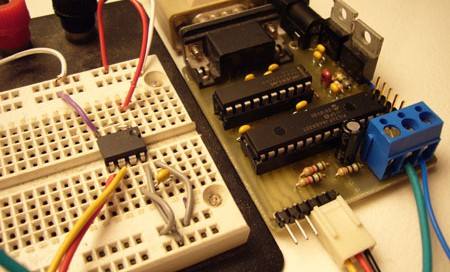
We’ve been following [glaciawanderer]’s CNC build for quite some time and he’s recently added a few upgrades to make for an even more interesting machine. He’s been trying out new bearing blocks, anti-backlash nuts, and z-axis plates hoping to get some improvements. In the case of the bearing blocks, he went back to the older style because of the added safety and smoother movement. The final addition he made was a dust collection system. It’s just a couple support hoops and duct tape, but it should keep dust out of the threads and rails.
















